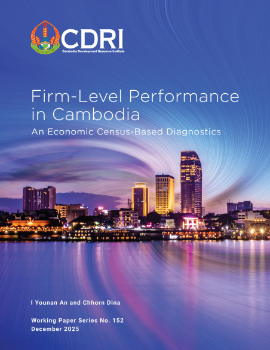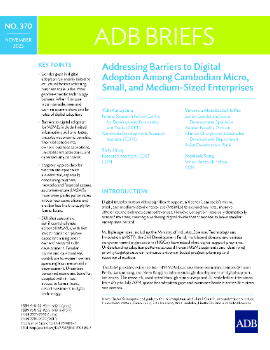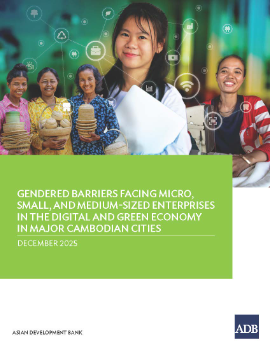
Cost and Benefits of Cross-Country Labour Migration in the Greater Mekong Subregion
Abstract/Summary
International labour migration can be characterised in three
ways – as human aspiration, tradition, and necessity. For some
people, working overseas is a dream. For others, international
labour mobility is a tradition. For a great number of people
however, international labour migration is an economic
necessity. It is the only viable solution to realise their basic
human right to a decent life. GMS worker movements to
Thailand typify all three characterisations of international
labour mobility. While this book focuses on the economic
dimensions of international labour migration, principally from Cambodia, Laos and Vietnam to Thailand, it recognises at the outset the equal standing of the noneconomic motivations for migration.
This book can be found via this link.
Related Publications
Firm-Level Performance in Cambodia: An Economic Census-Based Diagnosti...

18-Dec-2025
Cambodia’s enterprise landscape remains structurally dualistic, characterised by an extensive base of micro and informal...
Addressing Barriers to Digital Adoption Among Cambodian Micro, Small,...

12-Dec-2025
Gender gaps in digital adoption are mainly linked to structural factors affecting business scale rather than gender-spec...
Gendered Barriers Facing Micro, Small, and Medium-Sized Enterprises in...

12-Dec-2025
Drawing on extensive data and stakeholder insights, it reveals how unequal access to knowledge, finance, and networks ca...
